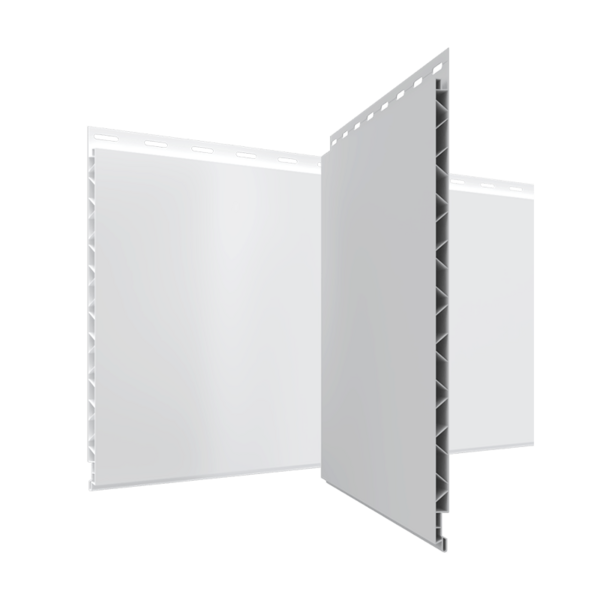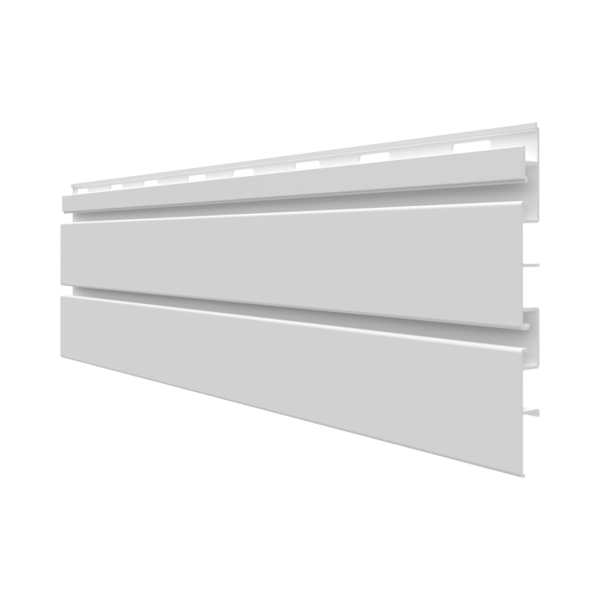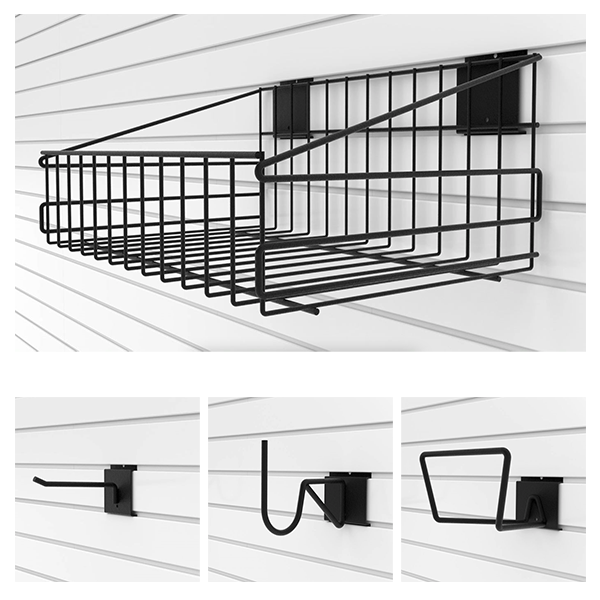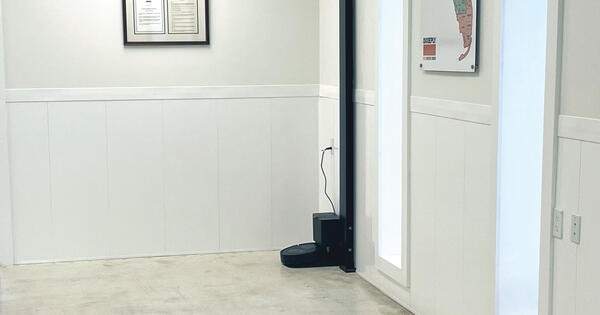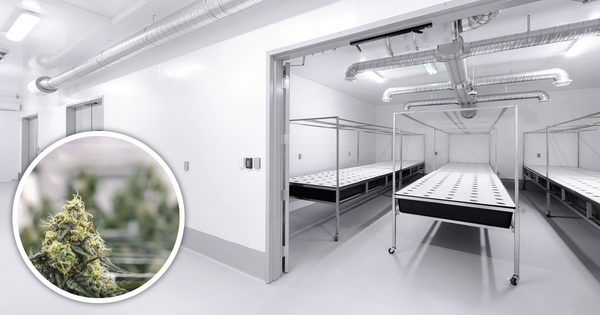The U.S. Environmental Protection Agency estimates that Americans spend 90% of their time indoors, and the indoor air quality of the spaces we live and work in play a big role in our overall health and wellbeing.
In fact, studies show that human performance and cognition is positively affected by improved indoor air quality, while indoor air pollutants can cause short- and long-term health problems.
When designing and constructing residential and commercial buildings, it’s important to have indoor air quality top of mind.
What is Indoor Air Quality?
Indoor Air Quality, commonly called IAQ, refers to the quality of air within buildings as it relates to the health and comfort of building occupants. Good indoor air quality is free from contaminants and contributes to a comfortable indoor environment in relation to temperature, humidity, circulation, and ventilation.
There are countless common contaminants that can negatively affect indoor air quality, including:
- Carbon dioxide from building occupants and from gas or oil furnaces and heaters
- Carbon monoxide from vehicle exhaust brought into the building through air intake vents
- Asbestos, dust, fiberglass, and gases from building materials
- Volatile organic compounds (VOCs) and vapors from computers, carpets, furniture, glues, paints, printers, copiers, and from cleaning supplies including disinfectants and solvents
- Dust mites from carpets and fabric-covered furniture
- Microbes like mold, bacteria, and fungi from damp areas, wet or damp building materials like drywall, and stagnant water
Why is Indoor Air Quality Important When Selecting Building Materials?
Building materials that contain the contaminants listed above or allow for those contaminants to grow can negatively impact a building’s air quality.
When indoor air quality is poor, issues arise for employers, including:
- Increased health issues for building occupants and employees (e.g., headaches, fatigue, shortness of breath, sinus congestion, coughing and sneezing, dizziness, nausea, and dryness or irritation of the eyes, nose, throat, and skin)
- Increased absenteeism
- Overall loss of productivity
Good indoor air quality, on the other hand, positively contributes to the overall productivity, comfort, health, and well-being of building occupants and employees.
Indoor Air Quality Design and Maintenance Checklist
While it’s virtually impossible to reduce all possible contaminants in any given space, the Government of Canada recommends adding these steps and strategies to your indoor air quality design and maintenance checklist:
- Reduce or eliminate any possible sources of contaminants indoors (i.e., install moisture resistant paneling instead of drywall and opt for vinyl flooring instead of carpet) and outdoors (i.e., don’t install air intake vents vent near approved smoking areas or where vehicles will idle)
- Install effective ventilation systems — ventilation systems can remove and dilute contaminants by replacing indoor air with filtered and conditioned air from outside
- Install filtration units or filters as part of the ventilation system to remove contaminants from the building
- Establish a regular maintenance schedule for ventilation systems, being sure to regularly replace filters (per manufacturer’s guidelines) to reduce contaminants and maintain indoor temperature and moisture levels
- Control moisture and humidity levels within a building to prevent mold growth
- Choose low-VOC cleaning products and use vacuuming systems that have a HEPA filter
- Train and educate building operators, employers, and occupants on how to identify potential IAQ issues and how to report IAQ concerns
 LEED Requirements for Indoor Air Quality
LEED Requirements for Indoor Air Quality
Choosing building materials that positively affect indoor air quality can also contribute to LEED certification. LEED certification — also known as Leadership in Energy and Environmental Design — is the most widely used green building rating system in the world. It’s designed to provide builders with a practical framework for creating healthy, highly efficient, and cost-saving green buildings.
There are currently nine different LEED categories that builders can earn credits in, with one category being entirely dedicated to indoor environments. The Indoor Environmental Quality (IEQ) category addresses indoor environmental factors — including air quality, interior lighting, thermal comfort, and acoustics — that affect the way people learn, work and live. Within this category, there are several credits builders can earn that are designed to increase indoor air quality in a building:
- Integrative Process for Health Promotion. This credit aims to assist new construction teams in comprehensively addressing health concerns from the beginning of a project. It requires projects to bring on a public health partner to advise on the implications of strategies and design.
- Enhanced Indoor Air Quality Strategies. This credit aims to help teams create strategies to address entryway systems, interior cross-contamination prevention, filtration, exterior contamination prevention, and more for mechanically and naturally ventilated spaces.
- Contaminant Control. This credit aims to reduce occupant exposure to indoor airborne contaminants through source control and removal opportunities.
- Construction Indoor Air Quality Management Plan. This credit aims to promote the well-being of construction workers and occupants by requiring builders to minimize indoor air quality problems associated with construction and renovation.
- Performance-Based Indoor Air Assessment in Existing Buildings. This credit for existing building requires baseline testing and ongoing monitoring of indoor air qualities. Building operators interested in earning this credit must find ways to reduce potential adverse health impacts to occupants that can arise from exposure to contaminants.
- Low-Emitting Materials. This credit aims to reduce the concentrations of chemical contaminants that can damage air quality, human health, productivity, and the environment by requiring builders to use products that meet a specific set of low-emitting criteria.
- Green Cleaning. This credit aims to reduce levels of chemical, biological, and particulate contaminants from cleaning products that can compromise health, building finishes, and the environment.
Trusscore Products Contribute to Improved Indoor Air Quality
Trusscore products, including Trusscore Wall&CeilingBoard and Trusscore SlatWall, contribute to indoor air quality and indoor environmental quality in several ways:
Low VOC Compliance
Trusscore products are low volatile organic compound (VOC) compliant and meet the California Department of Public Health (CDPH) 01350 standard for low-emitting materials.
Ease of install
During construction, drywall needs mudding, taping, sanding, and painting, which sends drywall dust and VOCs into the air. Trusscore panels are pre-finished and only require screws for installation, keeping the air on your jobsite free from contaminants
Mold resistant paneling
Since they’re made from PVC, Trusscore products are 100% moisture and water resistant, so they’ll never grow mold or mildew.
Energy savings
White Trusscore panels have a reflectivity value of 0.90, which means they reflect 90% of the light that hits them. The reflectivity of Trusscore panels helps maximize all natural and fixture lighting in a room to keep costs low and save on energy consumption.
Antimicrobial properties.
When tested in comparison to drywall and OSB to evaluate the growth of several microorganisms (ISO 846:2019), Trusscore Wall&CeilingBoard was the only material offering complete protection resulting in zero growth of mold, bacteria, and viruses.
Long lasting performance.
Trusscore Wall&CeilingBoard has a service life of up to 100 years and is designed to outlive the buildings it’s installed in. The panels are scratch, dent, and damage resistant, and can be recycled up to six or seven times to create new PVC-based products.
Working or living in a building that has been designed and constructed in accordance with good environmental choices and principles is a rewarding experience, both in terms of health and well-being. Trusscore products can help.
Talk to a Trusscore Expert
Have questions about Trusscore? A Trusscore Product Specialist is on hand with answers — ask us about product specifications, applications, where to buy, and more.
Products for Better Buildings
Wall&CeilingBoard
Trusscore Wall&CeilingBoard is an interlocking, interior PVC wall and ceiling panel that is lightweight, low maintenance, and outperforms alternative products like drywall and FRP.
Learn MoreSlatWall
Trusscore SlatWall is a high-strength, on-the-wall organization system that’s easy to install and seamlessly integrates with Trusscore Wall&CeilingBoard.
Learn MoreSlatWall Accessories
Trusscore offers several SlatWall hardware options — including hooks, baskets, and shelves — that snap into place and can be easily moved around as your storage needs change.
Learn More
